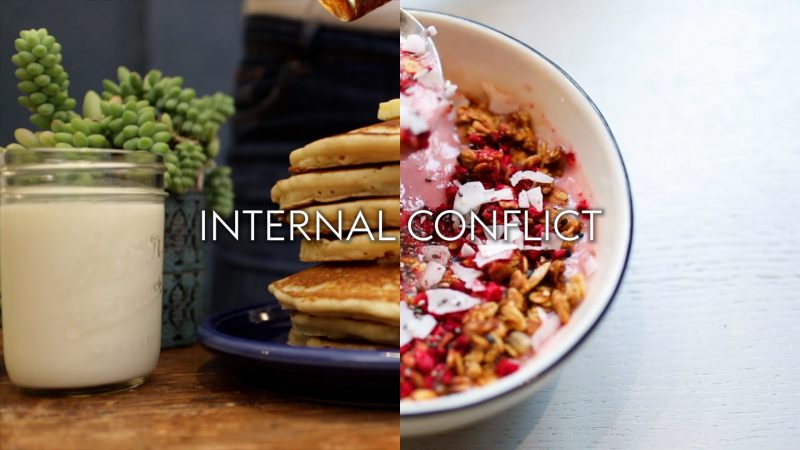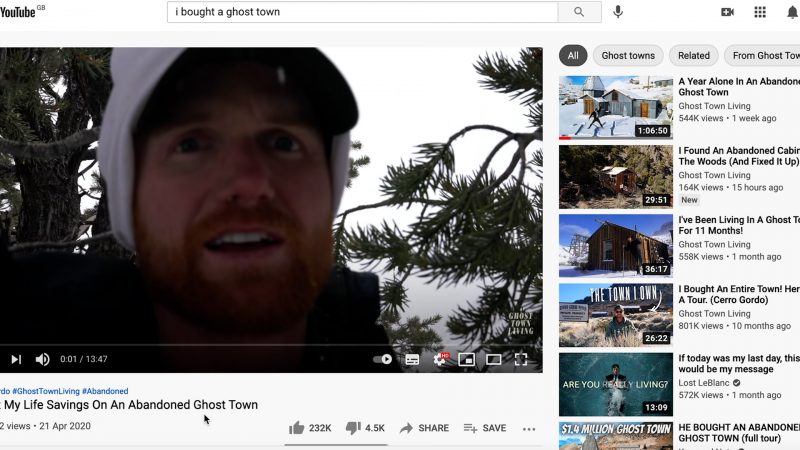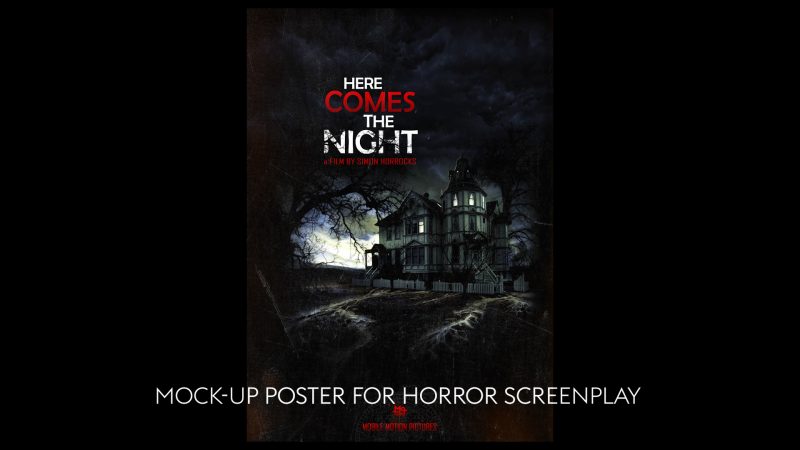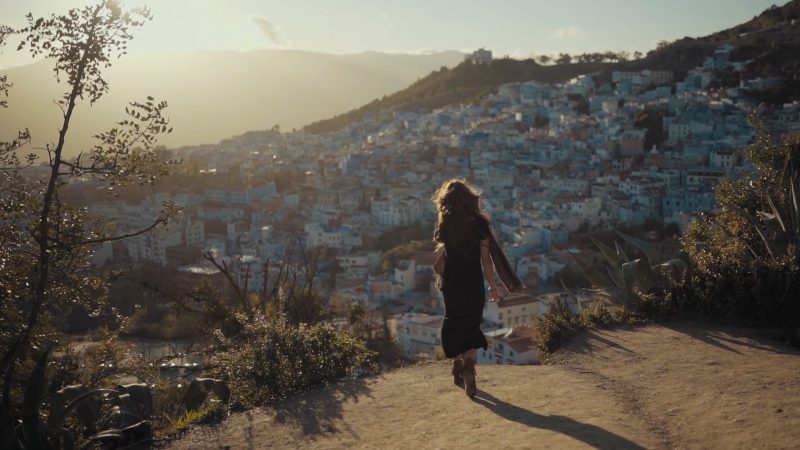Create Stories That POP
My first ever script was selected by a British TV company, for a short film series they were producing. I had no training or experience, so I wrote it using my instincts.
The problem is, when you haven’t learned the craft, developing a story can be really hard. And that’s why my novice script ultimately never got made.
Since then, I’ve learned a ton about how to create stories. I’ve simplified the way I create stories and you can use what I’ve learned to create stories for movies, YouTube, social media, or any other format.
In fact, what have I just done? That’s right – I just told you a story.
But I didn’t just think this up on the spot, even if I wanted you to feel like I did. I wrote this down and played around with it. My aim was to make this opening part hook you in, and hopefully you want to read the rest of this article.
How to Create Stories
I’ve had a few requests to help people find and develop stories. So here is a simple way to create stories:
First, we need an idea for a story. We need to think about what our audience wants. Then we need to find a way to hook that audience into wanting to know what happens. That’s why every story needs to be a question. And to answer that question, every story has a structure – from a 10 second advert or TikTok video, to the hours required to make up a multi season TV show.
Let’s take a look at these elements and see how we can use them to create stories.
How to Get Ideas to Create Stories
The first thing to realise is that stories are everywhere, filling your day. They’re so numerous, we can become blind to them.
Stories are like grains of sand. But what’re we doing? We’re standing on the beach, looking into the distance for stories, when we should be looking under our feet. That’s where our stories are.
From the moment we wake up, we start telling ourselves stories. The story might be, “I’m still tired and I don’t want to get up.” or “Hey, it’s Sunday – I can lay in.” Then later, “I’d better not eat those pancakes for breakfast, I’ll have something more healthy instead. Actually, who am I kidding…”
And this continues throughout the day, until you go to sleep. Then your brain will create stories in the form of dreams and nightmares. There’s no escaping stories!
And your story right now might be: “I don’t feel confident when I create stories, so I need to read some online tutorials.”
Whether to have a healthy or unhealthy breakfast is an internal struggle. There’s 2 conflicting voices in your mind, arguing with each other. So, right there that could be a story to develop. Perhaps a 5 minute comedy about someone struggling to be healthy.
Can you think of ideas for how that story might go?
Note them down, because we’ll come back to them later.
Choosing a Story
Now that you’ve realised your daily life is composed of 1000s of interconnecting stories, suddenly you have an abundance of material. Maybe you think you can’t make a video of such mundane subjects as what you’re having for breakfast. But, as we know, seemingly mundane events form the backbone of social media content.
Perhaps you have greater ambitions than instagramming your dinner, though.
But this is a very important point, which illustrates how the internet and social media has changed how we create stories. What’s changed is the speed with which we get feedback.
The connection between a storyteller and her audience is key. It always has been.
Perhaps it started around the campfire thousands of years ago. And the storyteller would be recounting his favourite wooly mammoth hunting story and he would know how well it was going from the reactions of the listeners.

If it didn’t go well, perhaps he would tell a ghost story next time instead. Or maybe he would simply cut out the part of the story where his listeners seemed to be losing interest.
But, nobody arrived at the perfect story with their first try. I bet the best campfire storytellers were the ones who practiced and honed their stories over years.
Back then, our listeners yawned because they were bored or gasped because they were thrilled. These days, we have YouTube analytics.
Whether you are by a campfire or on YouTube, to be successful a storyteller must be in tune with her audience.
Ask yourself: What kind of stories do you know your audience like?
Knowing the answer to this question is key to any job that involves storytelling. Blog writing, journalism, marketing, social media manager, YouTuber, screenwriting and so on.
Understanding Your Audience
Most professional storytellers started out as a member of the audience. We start as consumers of stories and then we decide, “I want to try that”.
So that’s our first understanding of the audience’s needs. We can ask ourselves: “Sitting in the audience, what do I want? What stories do I want to hear?”
Let’s say you want to be a YouTuber. I’m guessing you already have your favourite YouTubers that you follow. If you want to tell stories in the same area, then it’s very easy to go through their videos and see which ones are hitting the mark in terms of views and which ones are missing.
Before the internet, companies would keep their market research to themselves. Now, it’s all out there in broad daylight – so we would be foolish not to help ourselves, right? There’s also many online tools available, if you want to go deeper into the numbers.
When I started writing screenplays, all I had to go on was box office figures. And you had to subscribe to the industry magazines to get this information. And they weren’t cheap.
Now, you can use tools like Google Trends to see how hot a particular topic is.
Big or Niche?
Some topics have a big audience. For that reason, they already have a lot of people covering that topic, so it’s going to be harder for new people to muscle in.
For example, there are many general filmmaking YouTubers already established, so that’s a tough topic to break into. But, if you do, the audience is so big there are big rewards.
On the other hand, there might be more niche subjects which have a smaller audience. But, with less people serving content, there’s less competition. My suggestion would be, if you are starting from nothing, then a neglected niche might be your best bet.
Structure
Some adverts are only 5 or 10 seconds long but still manage to communicate a story. Then there’s studio blockbusters, some of which last over 3 hours. Longer still, the TV series format stretches over many hours and multiple seasons.
All of these stories have some kind of structure. And the simplest way to describe this structure is a beginning, middle and an end.
Start with a Hook
The aim here is to somehow combine something which grabs the audience’s attention as well as letting them know what the video is about.
I tried to do this at the start of this article as well, using one of my early success and failure stories. Not too many people have worked with a TV company on a script, so my hook is: “I’ve done something unusual, find out what happened.”
YouTube recently recommended a video to me, about a guy who says he’s bought a ghost town and now lives there. That hook got me to click and I watched most of the video. Again, it’s: “I’ve done something unusual, find out what happened.”
Doing something unusual is important. Imagine if the hook was, “I opened a tin of soup, find out what happened.” Most of us have opened a tin of soup. We know what happens and it’s not all that exciting.
What Are the Stakes?
Let’s say I’m running a Van Life YouTube channel. How can I hook my audience? Well, think about what the characters in the video stand to lose?
Something like, “I gave up my job as a banker to live in a camper van.” My guess is that a story about someone earning lots of money giving it up is more of a hook than if they were less well paid.
Why? Because the stakes are higher. A rich banker has more to lose. And high stakes always hooks people more than low stakes.
There’s some adverts that keep popping up on YouTube selling me a resilient phone case. You might have seen them. The ads starts with a young guy saying he’s going to drop his phone from a great height and then starts counting down.
The stakes are that his phone might be destroyed and we want to know what happens. In this case, the ad hooks us by giving us the impression it’s happening live. Even though we know it’s been recorded and set up to sell us a phone case.
The stakes are what hooks and grips audiences.
Fulfilling the Promise
So now we come to the middle section of the story. No matter what kind of story you’re creating, this section has to fulfill what you promised at the start. If you promised a banker giving up everything to live in a van, then that’s what you need to show here.
If you don’t fulfil that promise, the audience will feel cheated and misled.
For you as a storyteller, your mission is to keep your audience engaged as long as you can. We’re living in the age where algorithms use audience retention to decide whether to recommend your video. So this aspect of your story is going to become more and more important, no matter if it’s a Netflix production or a van life video.
So, how do we hold our audience’s attention? Keep reading to find out… 😉
No Repetition
Try as much as possible to avoid repeating story elements. When I’m working on screenplays, blog posts or YouTube videos, I weed out anything which I’ve said already.
For example, I might write something which is slightly different but on reflection I can see that really it’s a point I’ve made earlier. It’s not different enough to give it value. In that case, I will try to combine those repeated moments or just remove the least interesting one.
This happened to me recently when I was working on a horror feature script. I sent it to my friend who is head of sales at a film distribution company. I value her opinion because she reads it as someone who has to sell it.
One of her comments was that the main characters kept going into the cellar, so it felt like the story wasn’t progressing. Even though what took place in the cellar each time was different, it still gave a feeling of repetition. So that was great feedback.
10 second adverts aside, how do we keep the audience’s attention for longer periods? The simple answer is: create a gripping story. Sure, but how do we do that?
Raise Tension
Most stories involve some kind of drama. Even such things as action sport videos, where the story is really minimal, but the drama is maxed out. Usually there’s a moment of tension building and then BOOM – some crazy stunt.
In a sense, all dramatic stories work like this. Except in narrative movies there are many of these events, going in cycles. Build the tenson, BOOM. Build the tension again, BOOM.
This is why they often compare very exciting action movies to roller coasters. They work using the same principle: a slow build and theeeen – woosh! Drama!
As a screenwriter, your job is to have each of these dramatic cycles build throughout the film. So each cycle of tension and then dramatic conflict is more extreme than the one which preceded it.
This is how many different formats work, not just movies. Think about the TV show Who Wants to be A Millionaire? First it’s easy questions. Then, as the show progresses, the questions get harder and the stakes get higher, as the amount of money that can be won or lost increases.
It’s this increasing tension which keeps us gripped.
Imagine if that show just had easy questions and you only ever won $100 for each correct answer. It would be much less gripping. Like I say, it would become repetitive if the show didn’t keep raising the stakes.
End the Story
Some endings have big twists. Some are quite predictable, but satisfying nonetheless. Some leave things unresolved.
Horror films often like to have one last scare. Just when you thought the monster was defeated, an undead hand shoots up from the grave, or some such final shock. And this is so you don’t go to bed having forgotten that movie.
Rather, if it’s a good horror, it will linger in your thoughts and nightmares for a few days more. Probably, you’ll be more likely to tell your friends about it, too.
The final chapter of your story will usually try to bring all the dramatic threads to a conclusion. Some stories tie up more neatly than others. But usually at this point we resolve the main dramatic question.
How you resolve your story will depend a lot on your format.
The van life banker will not want to resolve everything in her first YouTube episode, because that would be the end of the channel. Instead, each episode will reflect on a smaller question and that might be resolved, instead. For example, “Van life ex-banker gets 2 flat tyres the desert. How will she get out of this predicament?”
The big question – what happens when a wealthy person gives it all up to live a traveller’s life – will be left open. That would be the main question which feeds all the smaller questions which form the content of the entire channel. The smaller questions bring new viewers, while the big overarching question gets them to become subscribers.
But if it’s a 10 minute self-contained short film (or long film) about a van life ex-banker, you should try to answer the big question at the end. Show your character on a complete journey – what do they learn? How does their struggle change them?
The Third Way
A great way to end a story is to take the 3rd path, which is a path of realisation. For example, Path 1 is being a banker, path 2 is being a van life traveller, but the 3rd path is when the ex-banker discovers her reason for wanting to become a traveller comes from something deeper.
For example, it was her controlling father who pushed her into becoming a banker. Throwing it all away for a life on the road was then an act of rebellion. So her 3rd path might be returning home, standing up to her father and finally choosing a job which suits her.
Exercise
Remember I asked you to think of ideas for the healthy breakfast internal struggle? If you want an exercise, write down 5 moments to show that story, write it in the comments and we’ll see what everyone comes up with. Number them 1 to 5. Those moments have to follow on from each other, a beginning, 3 middles and an end.
Use everything we’ve talked about here. A hook question, 3 moments of increasing tension and then a conclusion.
So that’s some tips for creating better stories. I’ve also written an article on how to write a short film, so check that out if you are interested.
Videography – Beginner to Advanced
If you want to know more about filmmaking, my book Smartphone Videography – Beginners to Advanced is now available to download for members on Patreon. The book is 170 pages long and covers essential smartphone filmmaking topics:
Things like how to get the perfect exposure, when to use manual control, which codecs to use, HDR, how to use frame rates, lenses, shot types, stabilisation and much more. There’s also my Exploring the Film Look Guide as well as Smartphone Colour Grading.
Members can also access my regular filmmaking podcast, as well all 5 episodes of our smartphone-shot Silent Eye series, with accompanying screenplays and making of podcasts. There’s other materials too and I will be adding more in the future.
If you want to join me there follow this link.
Simon Horrocks
Simon Horrocks is a screenwriter & filmmaker. His debut feature THIRD CONTACT was shot on a consumer camcorder and premiered at the BFI IMAX in 2013. His shot-on-smartphones sci-fi series SILENT EYE featured on Amazon Prime. He now runs a popular Patreon page which offers online courses for beginners, customised tips and more: www.patreon.com/SilentEye








